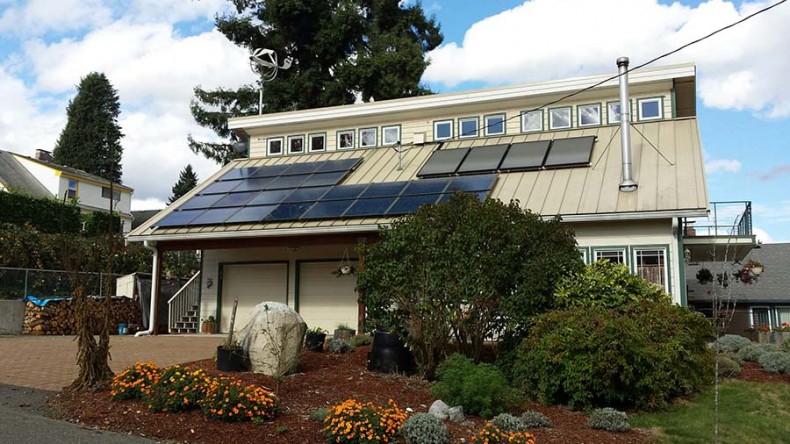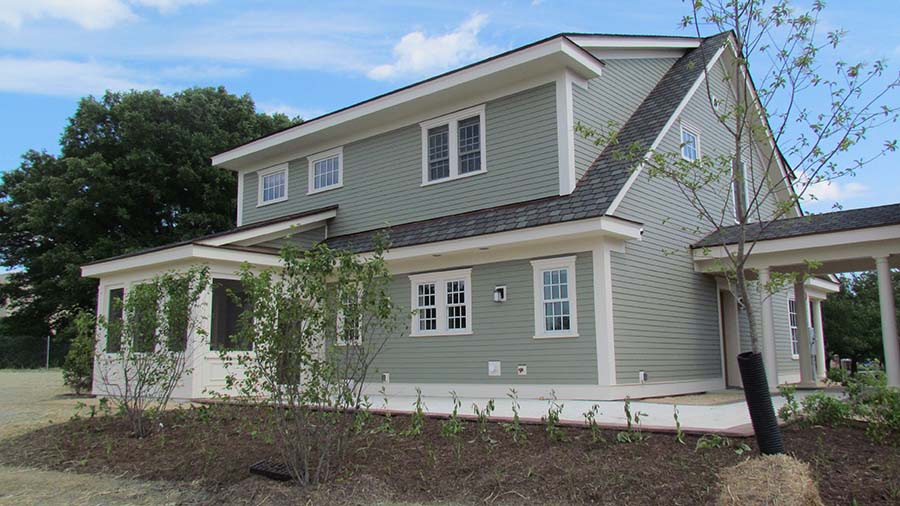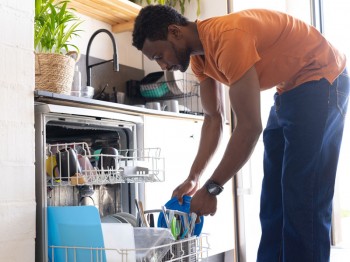Producing power: Can You Have a ‘Zero Net Energy’ Home?
By Patrick Keegan and Amy Wheeless
Wind energy and both passive and active solar can help achieve Zero Net Energy.
People have been hearing more about Zero Net Energy (ZNE) homes or net-zero homes. These terms refer to homes where all of the energy used is completely offset by the production of on-site power, such as through rooftop solar photovoltaic panels.
Having a ZNE home doesn’t mean that you are “off-grid” — your home still uses electricity from your electric co-op for daily needs, especially when the sun isn’t shining. A ZNE home also means you can supply power back to the electric grid from your solar panels.
Usually, the term ZNE home describes a newly built home, as it is easier to custom-build an energy efficient home and properly size solar panels that will match the expected energy use. However, existing homes can also be retrofitted to be ZNE. But before you buy a large solar panel system, remember this mantra: “Reduce before you produce.”
Efficiency options like heat pumps and increased insulation may not seem as exciting as solar panels, but they can produce a better return on your investment. First, make all the cost-effective energy efficiency improvements you can. You will likely be able to reduce the number of solar panels you need, while also seeing sustained energy savings over time.
A professional energy auditor is the first step. The auditor will walk through your home and perform a blower door test to see how tight your home is and help determine where the leaks are for sealing, as well as other energy efficiency improvements. The cost may range between $300–$600 for a professional audit with blower door testing. If you are interested in an energy audit, consult with your electric co-op. Some offer free simple walk through audits or may be able to advise you on a trusted professional auditor in the area.
Retrofitting a home to be ZNE will likely require investments — large and small. Upgrading your HVAC system to something more efficient is a large investment, but as heating and cooling usually makes up half of the average home’s energy use, the upgrade will have a substantial impact, especially when combined with insulation improvements. Sealing up air leaks and replacing lightbulbs with LEDs are smaller investments but can also help you reach ZNE. Behavioral changes such as reducing cooling when you leave for the day and using the tried-and-true solar clothes dryer (a clothes line!) are also small ways to reduce energy use.
Once you have reduced energy use as much as possible, explore options to produce energy. Solar photovoltaic panels are the most common residential renewable energy installation, though a small wind energy system could be a good choice if your home is on one of the rare sites windy enough. If you are considering either option, talk with your electric co-op first.
There are also other ways to harness the sun’s power. For example, solar water heaters can be cost effective. Or you can use passive solar techniques, like strategic window placement, landscaping and shading, and specific building materials to reduce sun and heat exposure in the summer.
Finally, electric co-ops are beginning to offer community solar programs, or “solar gardens,” where co-op members invest in part of a larger solar installation that supplies the co-op’s electric grid. Participating gives you the benefit of solar power without needing to install and maintain your own solar panels.
Products and services mentioned in this article may not be available in some regions. Contact your electric cooperative to discuss currently offered services.
About the Author
This column was co-written by Pat Keegan, who writes on energy efficiency for the National Rural Electric Cooperative Association, and Amy Wheeless of Collaborative Efficiency. For more information on retrofitting your home or building a new Zero Net Energy home, please visit: collaborativeefficiency.com/energytips or email Pat Keegan at energytips@collaborativeefficiency.com.-
Share this story:





